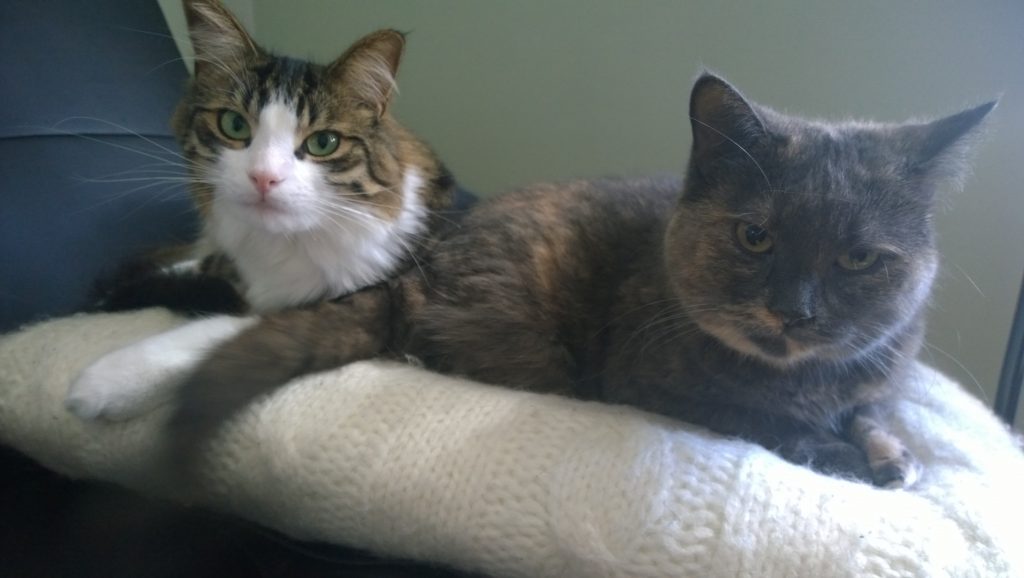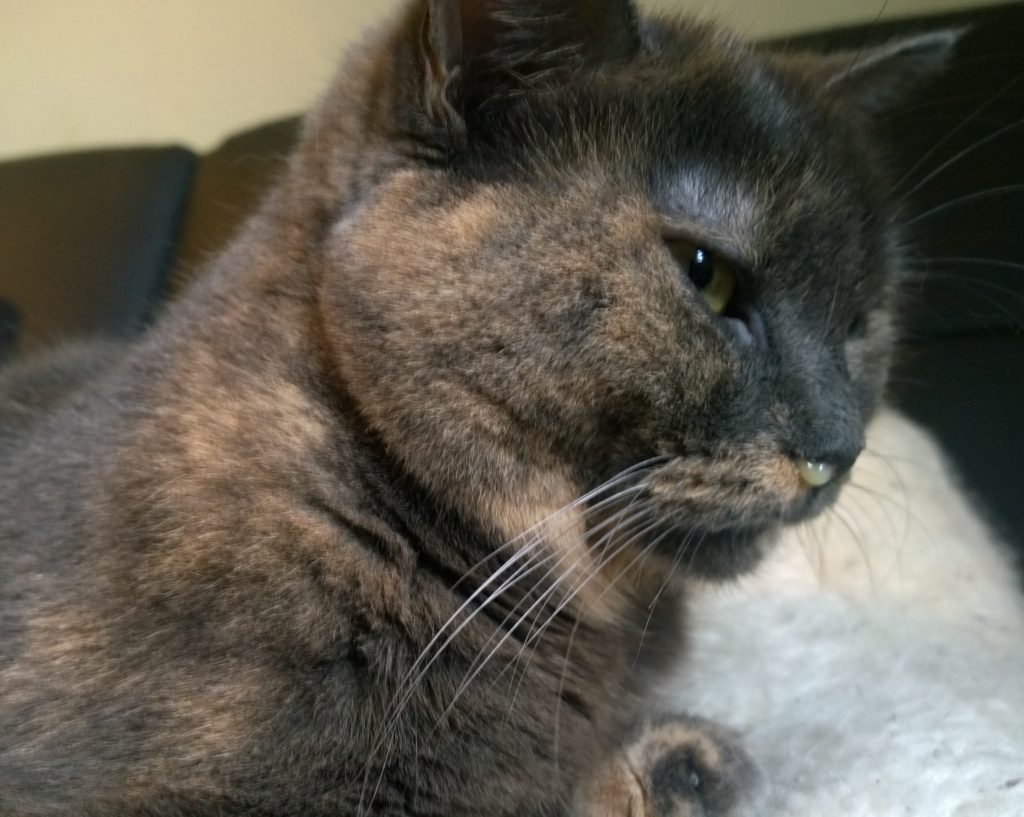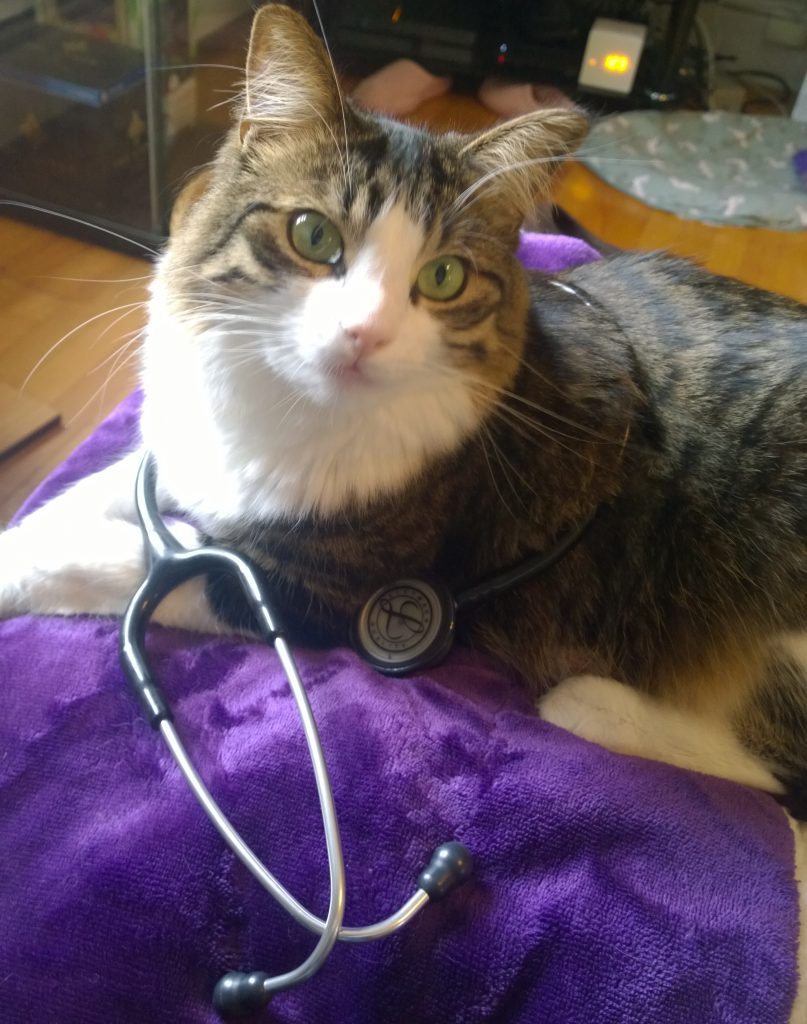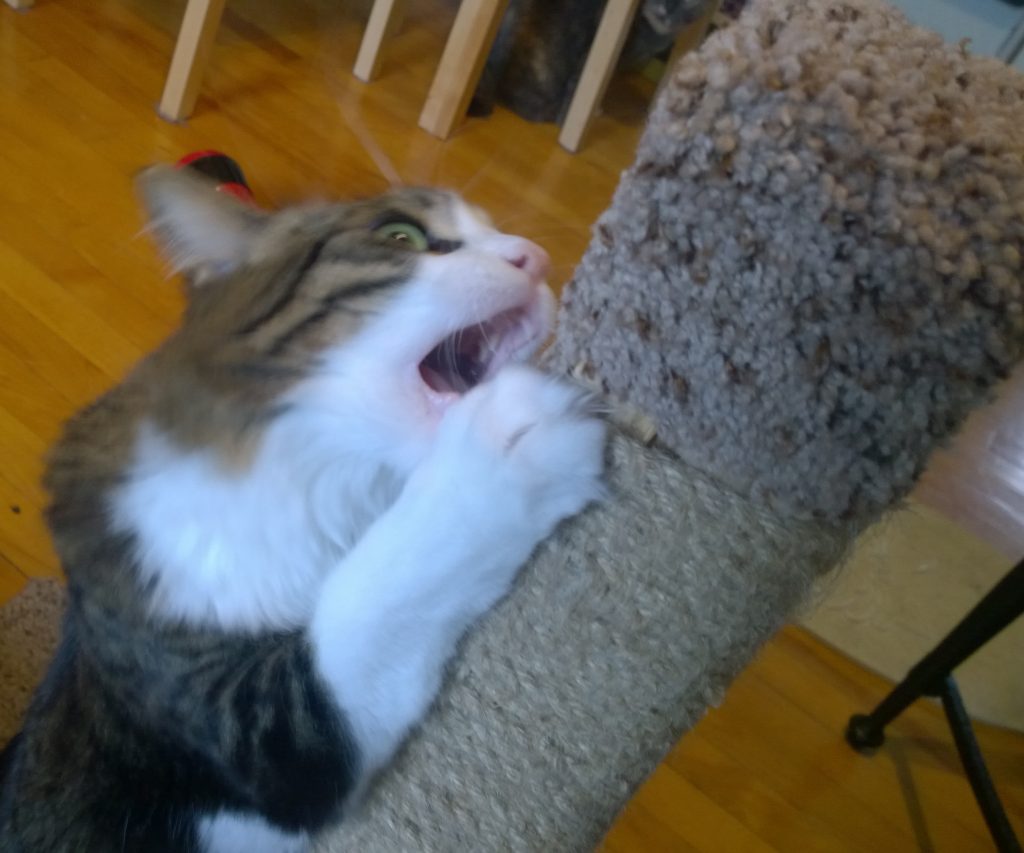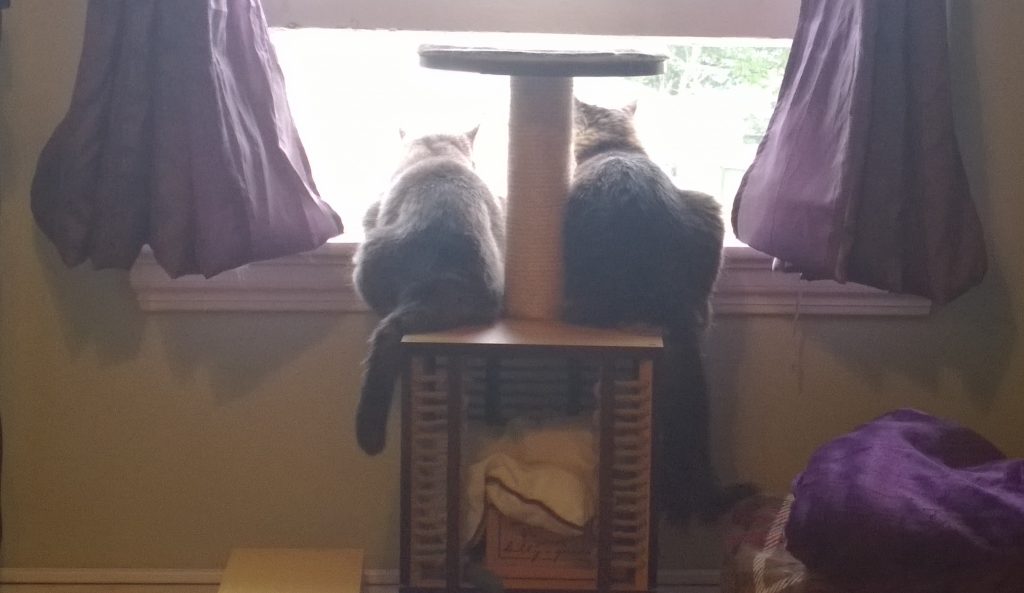As animal rescuers, we become very accustomed to the adoption process. We choose our questions carefully and read into every word a potential adopter gives in response–sometimes a little too much–and this helps us to feel comfortable in our decision to let the animal in our care be adopted into the perfect new family. But there are so many things we are guilty of doing wrong, so many ways that we forget that even the most well-intentioned adopters do not have the same library of animal care information in their heads as we do.
I have specifically been thinking of cats lately (okay, I’m always thinking of cats) and how we do them wrong by not providing adopters with adequate information, whether it is about the individual cat themselves or about cat care in general. As animal rescuers, be we involved with a large shelter or a foster-based rescue or a veterinary clinic, there are a few simple things we can do to ensure that the new home we send our cats to will be the best forever home they can get.
1. Be Honest
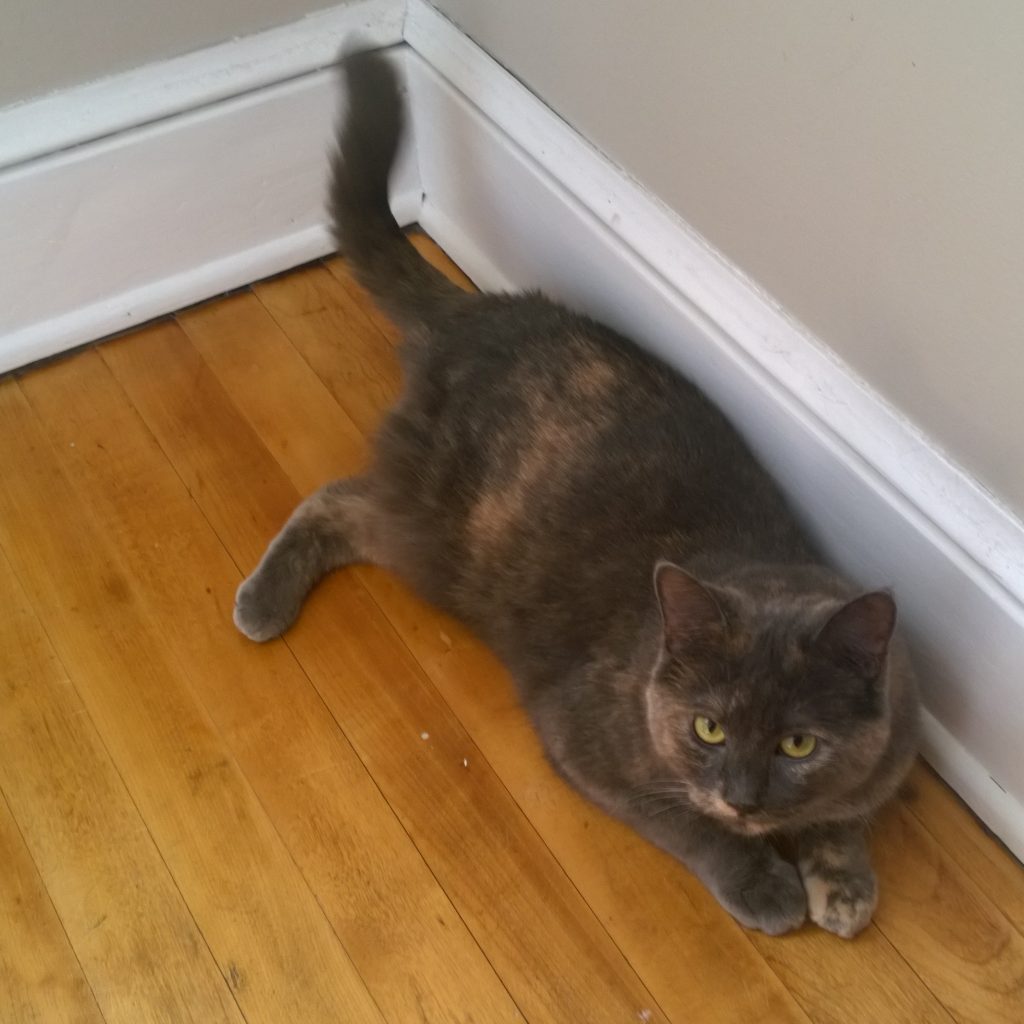 If a stray cat is taken into your care and has tartar caked on its teeth, caterwauls through the night, and can barely jump onto a chair, don’t estimate its age at 5 years old. Be honest. Yes, senior cats are less adoptable than young ones, but there are loving families awaiting them–it just might take a little longer to find them. By being honest about the “shortcomings” of the cats in our care, we can ensure that they will get the extra care they need in their new families. It makes me happy to see a rescue posting a cat in renal insufficiency and explaining the treatments their new family would have to be responsible for; the person who steps forward and adopts a cat like this will truly do all they can to give them the best quality of life.
If a stray cat is taken into your care and has tartar caked on its teeth, caterwauls through the night, and can barely jump onto a chair, don’t estimate its age at 5 years old. Be honest. Yes, senior cats are less adoptable than young ones, but there are loving families awaiting them–it just might take a little longer to find them. By being honest about the “shortcomings” of the cats in our care, we can ensure that they will get the extra care they need in their new families. It makes me happy to see a rescue posting a cat in renal insufficiency and explaining the treatments their new family would have to be responsible for; the person who steps forward and adopts a cat like this will truly do all they can to give them the best quality of life.
Likewise, as far as honesty goes, I dislike seeing rescues stretching physical characteristics and advertising them as a mixed (or pure!) fancy breed. Just because a longhaired tabby cat is a few pounds heavier than average, does not make them a Maine Coon. When we advertise cats based on breeds–I hate to say it–a lot of shallow people come out of the woodwork. People will look at a photo and a breed listing and fail to read the written description of their personality, so potential adopters might not know what they are committing to. There is nothing wrong with being a plain ol’ domestic long hair. But if you do end up with a purebred like a Bengal in your care…please, make sure the adopters understand that breed and the needs unique to them, because not every person can handle every breed!
 2. Explain Upper Respiratory Infections
2. Explain Upper Respiratory Infections
Almost every cat who has been in a shelter setting has had an upper respiratory infection to some extent. It might just been a short bout of the sneezes, or maybe manifested more as an eye infection, or it could have been oral ulcers–when cats are exposed to new environments, stress, other cats, or unsanitary conditions, they get URIs. So how many of those conditions apply not only to shelters, but also to new homes? After having one infection, many cats remain susceptible to repeat infections, and the stress of being introduced into a new home oftentimes causes a flare-up. It saddens me to say that these flare-ups regularly send adopters running back to the shelter or rescue they adopted the cat from to return or exchange the cat who just needs some help getting over their kitty flu.
Take the time to explain these infections to adopters. Having a handout to provide all adopters with basic information and descriptions of clinical signs can be very helpful. Also emphasize your willingness to help adopters if an upper respiratory infection does emerge after the cat arrives home, so adopters don’t feel like they have had a sick cat dumped on them so the rescue can be rid of them.
 3. Drop the Anti-Vet Sentiments
3. Drop the Anti-Vet Sentiments
Speaking of cat health, anti-veterinarian sentiments are something that many animal rescuers are guilty of. Veterinarians are an ally, not an enemy. As a veterinary technician, I can tell you something honest about all of the veterinarians I have worked with: they want nothing more than to see their patients in good health. Even if there is one specific veterinary practice that you trust, give their name to new adopters and encourage them to go see them. Adopters trust you as an information resource, and if you don’t mention veterinary care upon adoption, they might not grasp the importance of regular vet visits.
I have to say, since moving to Nova Scotia, I love the relationships that shelters have with veterinarians here. There are always exceptions, but for the most part shelter animals are receiving great care from reputable doctors and other animal health professionals. I wish that Montreal shelters had a similar relationship with veterinary practices as Dartmouth, as dogs and cats adopted from their SPCA receive a free vet visit during the first two days following adoption–how cool is that? This prevents the habit of animals being adopted and not being seen by a doctor until they are old and/or sick, which creates a large challenge for veterinary professionals to pinpoint when a problem started and to devise a plan to treat it without having any existing medical history.
 4. Talk About Claws
4. Talk About Claws
Okay, you’ve pointed out the “no declawing” clause on the contract and have the adopters signature on the line…does that really mean anything? I am sorry to be the one to say it, but there are definitely people who have signed that and then made an appointment to have the cat declawed. Quebec is remarkably terrible for this, despite Quebec being the home of Canada’s most known cat behaviourist team (Educhateur) that condemns declawing. Is it really attitude of Quebecers, or are we just not taking the time to explain things properly?
Part of this explanation is of course what the declaw procedure entails, but I also believe that we need to explain how and why cats use their claws. Scratching things is a natural behaviour for them, and adopters should be responsible for meeting that need–and rescuers should be responsible for explaining how to do that. We should never assume that new adopters have knowledge of scratching posts, that different cats might prefer vertical or horizontal surfaces, and that placement is a huge factor to determine if a cat will scratch a post or scratch a sofa. And with every cat adopted, a demonstration of nail trimming is a free and hugely beneficial practice to teach that claws are very manageable things. I could go on and on about Soft Paws and video tutorials and the Paw Project, but these are all things that rescuers are aware of; we simply need to take the time to make sure that adopters are aware of them too.
5. Provide Environmental Needs Information
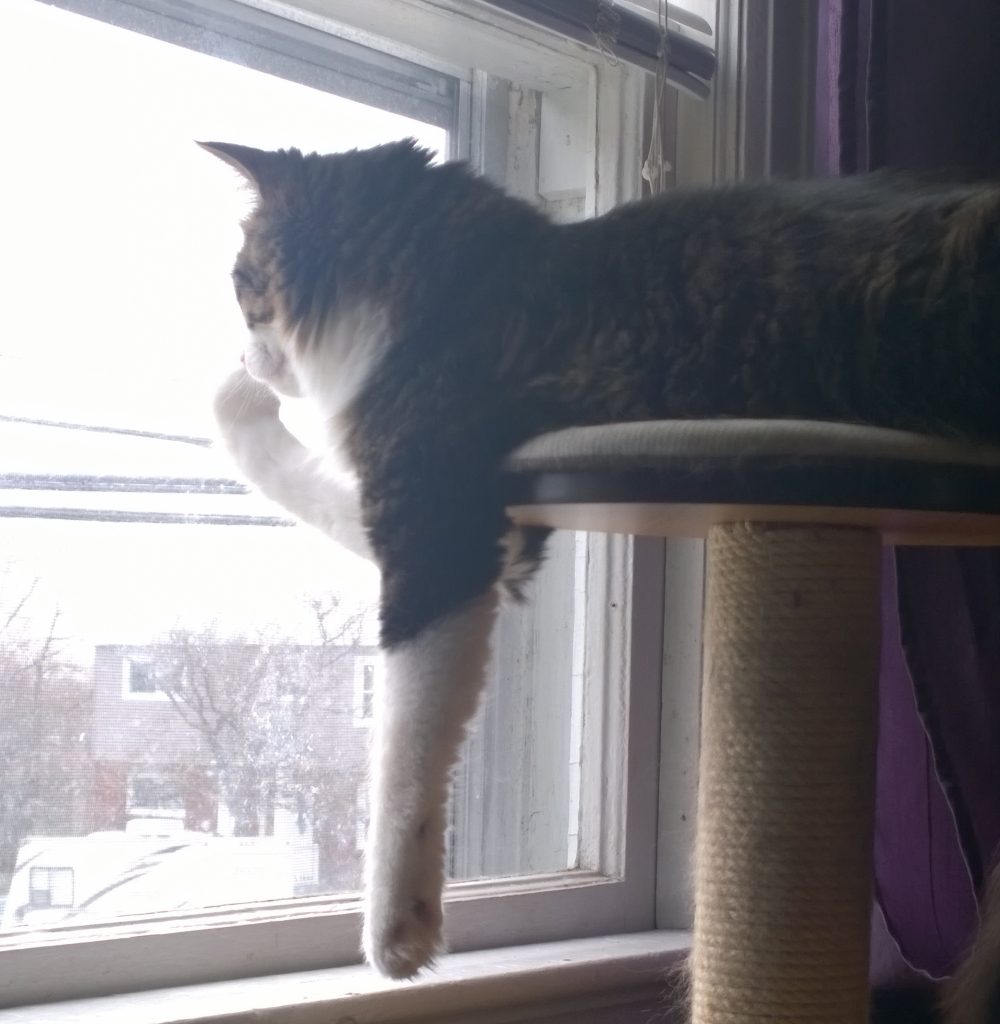 I am sure many of us have Facebook feeds littered with innovative environmental enrichment photos and articles, photos of houses with floating shelves and catios and cat trees that would make any cat scoff at the prospect of going outdoors. But here is a shocking truth: this is not what the average adopter’s Facebook feed looks like. Yes I know, people are totally missing out on some amazing ideas for environment enrichment–that is where we as rescuers come in! Whether a potential adopter lives in a mansion or a bachelor apartment, there are ways to create a healthy environment for a new cat. Let me break down the cat-friendly environment I have crammed into my 1-bedroom apartment, without breaking my lease contract’s rules about decorating: two cat trees (each with scratching posts), two additional scratching posts, two puzzle feeders, two litter boxes, access to window views, more cat beds than I can think of at the moment, and all sorts of toys.
I am sure many of us have Facebook feeds littered with innovative environmental enrichment photos and articles, photos of houses with floating shelves and catios and cat trees that would make any cat scoff at the prospect of going outdoors. But here is a shocking truth: this is not what the average adopter’s Facebook feed looks like. Yes I know, people are totally missing out on some amazing ideas for environment enrichment–that is where we as rescuers come in! Whether a potential adopter lives in a mansion or a bachelor apartment, there are ways to create a healthy environment for a new cat. Let me break down the cat-friendly environment I have crammed into my 1-bedroom apartment, without breaking my lease contract’s rules about decorating: two cat trees (each with scratching posts), two additional scratching posts, two puzzle feeders, two litter boxes, access to window views, more cat beds than I can think of at the moment, and all sorts of toys.
Now let’s ask ourselves this: how many adopters know to provide these things for their cats? How many know that cats like access to high places AND hiding places? How many know that the rule of thumb for litter boxes is one litter box per cat plus one? How many know that puzzle feeders can help cats physically and mentally by keeping them busy and making them work for their food? While they feel obvious to me, I know that they are not known facts to most people. We need to share this information with adopters because even the adopters who have had cats their entire lives might not know the simple ways they can enhance their cat’s environment, and consequently quality of life.
 Montreal Dog Blog Montreal's Online Dog Park
Montreal Dog Blog Montreal's Online Dog Park




